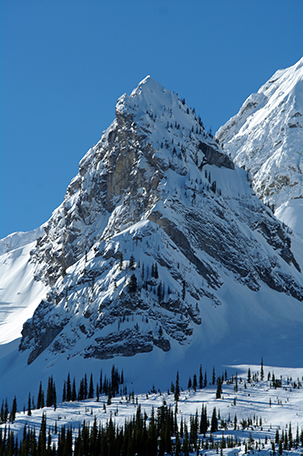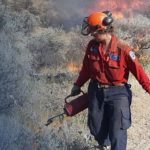Home »

Backcountry users asked to help in wolverine research
Wide-ranging, wily and wary: wolverines come by their tough reputation honestly. And now researchers are seeking for community scientists to better understand this species at risk.
Wolverine Watch is a scientific collaboration of researchers from British Columbia and Alberta. These scientists are asking people who ski, snowshoe, snowmobile or take part in other winter activities in the Canadian Rockies and associated mountain ranges to keep their eyes peeled for signs of wolverines and share what they see.
 Researchers are interested in sightings of wolverine, wolverine tracks, scats and dens, or what people might think was a wolverine sign.
Researchers are interested in sightings of wolverine, wolverine tracks, scats and dens, or what people might think was a wolverine sign.
Observations are welcome from across western Canada and the Rocky Mountains, particularly the Selkirk, Purcell, Monashee and Cariboo ranges of southeastern British Columbia. Reports can be made at the Wolverine Watch website.
While the chances of seeing a wolverine are rare, dens and tracks are more likely and easier to see because the mammals have a characteristic gait and paw print. Wolverines are also sensitive to disturbance, so after people record their observation, it’s best if they move on and do not try to follow the tracks.
“Because wolverines are rare, solitary and travel long distances over large areas to find food — more than 500 square kilometres — we need help narrowing down where they are. Community scientists can really help,” said Andrea Kortello, project co-lead with the South Columbia Mountains Wolverine Project.
Doris Hausleitner, also project co-lead, says wolverines have distinct paths as they usually travel in a line, sometimes for kilometres, as if they are on a mission.
“Wolverine generally move in a loping gait, leaving behind a diagonal pattern of tracks in sets of twos or threes,” she said.
Their tracks can be found in the valley bottom and in forests but are more often encountered high up above tree-line, where they are visible from quite far away.
 “The reason we are studying wolverines is to understand impacts on these sensitive mammals and their habitat. These animals roam far and wide and may be sensitive to changes to their habitat from a range of factors, including human activity and climate changes,” said Candace Batycki, program director at Yellowstone to Yukon Conservation Initiative, one of the project partners.
“The reason we are studying wolverines is to understand impacts on these sensitive mammals and their habitat. These animals roam far and wide and may be sensitive to changes to their habitat from a range of factors, including human activity and climate changes,” said Candace Batycki, program director at Yellowstone to Yukon Conservation Initiative, one of the project partners.
The South Columbia Mountains Wolverine Project is one of several Wolverine Watch projects collecting data in western North America in order to better understand whether or not human activity impacts wolverine distribution, reproduction, connectivity and gene flow.
Research regions include Canada’s northern Columbia region, the southern Columbia region and the Canadian portion of the Crown of the Continent ecosystem. All these regions are critical to the integrity of the Yellowstone to Yukon corridor.
Data will be used to inform agency decision-makers, landowners, natural resource companies, and First Nations, to ensure the needs of wolverines are incorporated into land use plans, management plans, highway mitigation and other projects.
The collaborative project educates and engages communities, while endeavouring to build public support for conserving the integrity of large landscapes, habitat connectivity, and solutions that support wildlife populations in the working landscapes of the study area.
Lead image: Wolverines at play. Photo by Daniel J Cox/NaturalExposures.com, courtesy Wolverine Watch
Submitted by Yellowstone to Yukon Conservation Initiative







